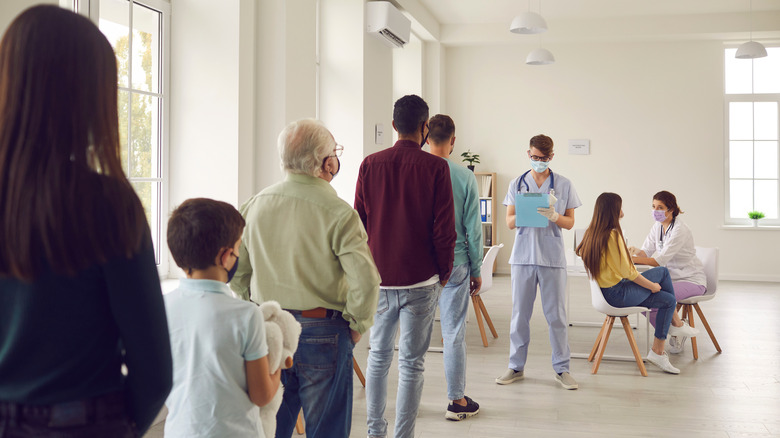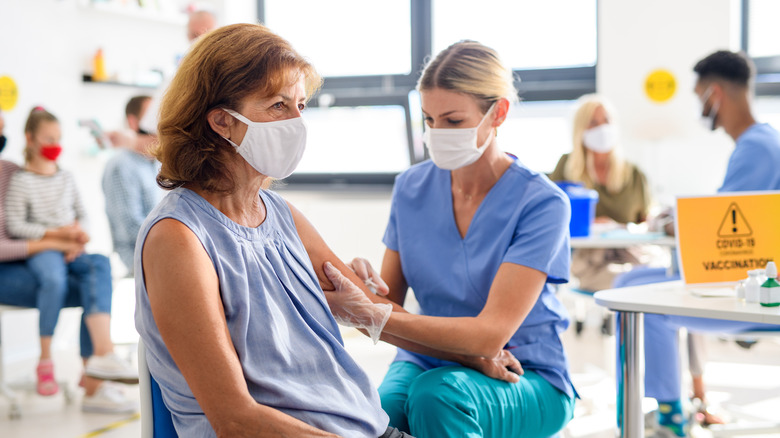The Real Reason You Have To Wait 15 Minutes After Getting Your COVID-19 Vaccine
If you are one of the 37 percent of Americans who have received the COVID-19 vaccine as of May 2021 (via NPR), you likely have experienced this. After receiving your vaccine, you were asked to wait on-site for at least 15 minutes before leaving the premises.
But why the extra 15 minutes? The request is due to recommendations by the Centers for Disease Control and Prevention that vaccine providers monitor all people who receive their vaccine in case of a possible allergic reaction. Those who have previously had a severe allergic reaction to a vaccine or injectable therapy are monitored for at least 30 minutes after receiving the shot, while all other people are monitored for 15 minutes.
The timeframe is especially important, as symptoms of anaphylaxis often occur within 15 to 30 minutes of vaccination, according to the CDC. This can resemble a mild allergic reaction, and it could be difficult to predict if the initial reaction will become a full anaphylactic reaction. Therefore, being under direct medical supervision is ideal, as your vaccination provider will have tools like epinephrine, antihistamines, a blood pressure monitor, and timing devices to check your pulse.
How severe allergic reactions are being monitored
You should continue to self-monitor after leaving your vaccine provider and seek medical attention immediately if needed, as it can sometimes take several hours for anaphylaxis symptoms to appear, according to the CDC. These symptoms could include hives, swelling, and wheezing.
It is important to note that severe allergic reactions due to the COVID-19 vaccine are rare (via Michigan Health). Typical side effects are pain, redness, and swelling in your shot arm, along with chills, fever, fatigue, headache, muscle pain, and nausea.
The CDC is also monitoring adverse side effects to the vaccine using their Vaccine Adverse Event Reporting System (VAERS). Your vaccination provider will report any reactions to the VAERS, and health officials will follow up if additional research is needed.
Although the extra 15-30 minutes may seem like an inconvenience, it can put you at ease, knowing that you are still under medical supervision during the timeframe that a severe allergic reaction could occur.


